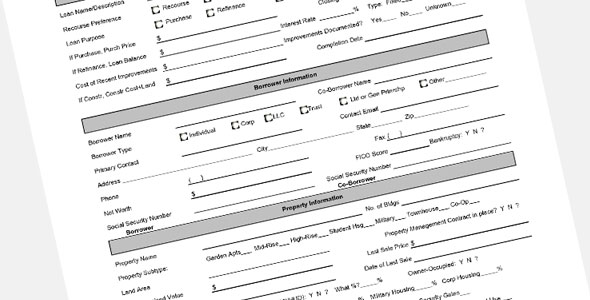If you have ever applied for business credit and were rejected, you aren’t alone. A recent survey of banks and asset-based lenders found they had turned down more than a third of all businesses’ applications for loans, according to Pepperdine University’s 2013 Capital Markets Report.
Furthermore, the report asserts that many businesses wouldn’t even attempt to seek funding because they believed their request would be rejected.
So, what can you do if your business credit application has been denied?
First, find out why your business credit application was denied. According to the Federal Trade Commission (FTC), an applicant should submit a written request for the reasons of the denial within sixty days, and the creditor must give the applicant the specifics in writing within thirty days of the request. Therefore, if you approach your lender, they may be able to resolve any issues.
Moreover, the FTC explains that the Equal Credit Opportunity Act prohibits creditors from denying a loan based on reasons that have nothing to do with an applicant’s creditworthiness.
Predict What Lenders Want to Avoid
In the aforementioned Pepperdine study, banks and asset-based lenders only rarely cited a company’s size or economic concerns as the reasons for declined loans. The top reasons instead were tied to the quality of the business’s earnings or cash flow, or to the fact that a company had insufficient collateral.
So, if your application for business credit was denied it is a good time to take a good look at your business and how it rates on the financial metrics that can best predict default – the exact scenario lenders want to avoid. One way to see how their firm stacks up against peers is through a business credit report.
Below are five financial metrics that Sageworks Inc., a financial information company, has identified as the best predictors of default. If you were denied business credit, highlight these metrics as areas for improvement.
1. Cash to assets.
This is a key measure of liquidity that provides an indication of how much flexibility a firm has to deploy cash or access liquid accounts in order to make good investments, according to Lawrence Litowitz, a partner at strategic advisory firm The SCA Group LLC. To improve this metric, manage your accounts receivable to ensure you’re getting paid as quickly as possible and manage inventory to avoid tying up cash.
2. EBITDA to assets.
Comparing EBITDA (earnings before interest, taxes, depreciation, and amortization) to a company’s assets helps to illustrate your company’s efficiency. Improving this metric often involves either raising revenues (without a similar increase in expenses) or cutting costs.
Utilizing customer suggestions and improved planning are a few ways to boost revenues. Also, review overhead expenses, such as telephone and equipment, or revisit vendor contracts to seek cost savings.
3. Debt service coverage ratio.
This is measured by comparing EBITDA to a firm’s current portion of long-term debt and interest expense, so boosting EBITDA with some of the suggestions above could yield improvement in the ratio. One effective way to tackle the debt and interest is to cut expenses and apply the savings toward paying principal on your debt.
4. Liabilities to assets.
This ratio indicates how much of your company’s assets are financed through debt, as opposed to through profits.
Improve this metric by reducing debt. The Better Business Bureau recommends making the biggest debt payment possible each month, especially for credit cards, which typically carry high interest rates that otherwise accrue interest payable, another liability account.
5. Net income to sales.
This is a fundamental measure of business profitability. In the short-term, cut operating expenses to boost this ratio, however this can backfire, so tread carefully. For example, skimping on equipment maintenance could lead to more expensive repairs or replacements. Longer-term goals required to improve profitability involve lowering production costs and increasing higher-profit sales.
Running a successful business isn’t a sprint, it’s a marathon. In the same way, addressing issues that contributed to business credit denial may take months or even years. But in the long run, the efforts should help you win not only a loan, but also create a more lucrative business.
This article originally appeared in AccountingWEB.
Connect with Sageworks on Twitter.
Photo: Business Credit Application
Mary Ellen Biery is a research specialist at Sageworks, a financial information company and provider of the Business Credit Report by Sageworks. She is a veteran financial reporter whose works have appeared in The Wall Street Journal and on Dow Jones Newswires, CNN.com, MarketWatch.com, CNBC.com, and other sites.
© YFS Magazine. All Rights Reserved. Copying prohibited. All material is protected by U.S. and international copyright laws. Unauthorized reproduction or distribution of this material is prohibited. Sharing of this material under Attribution-NonCommercial-NoDerivatives 4.0 International terms, listed here, is permitted.




